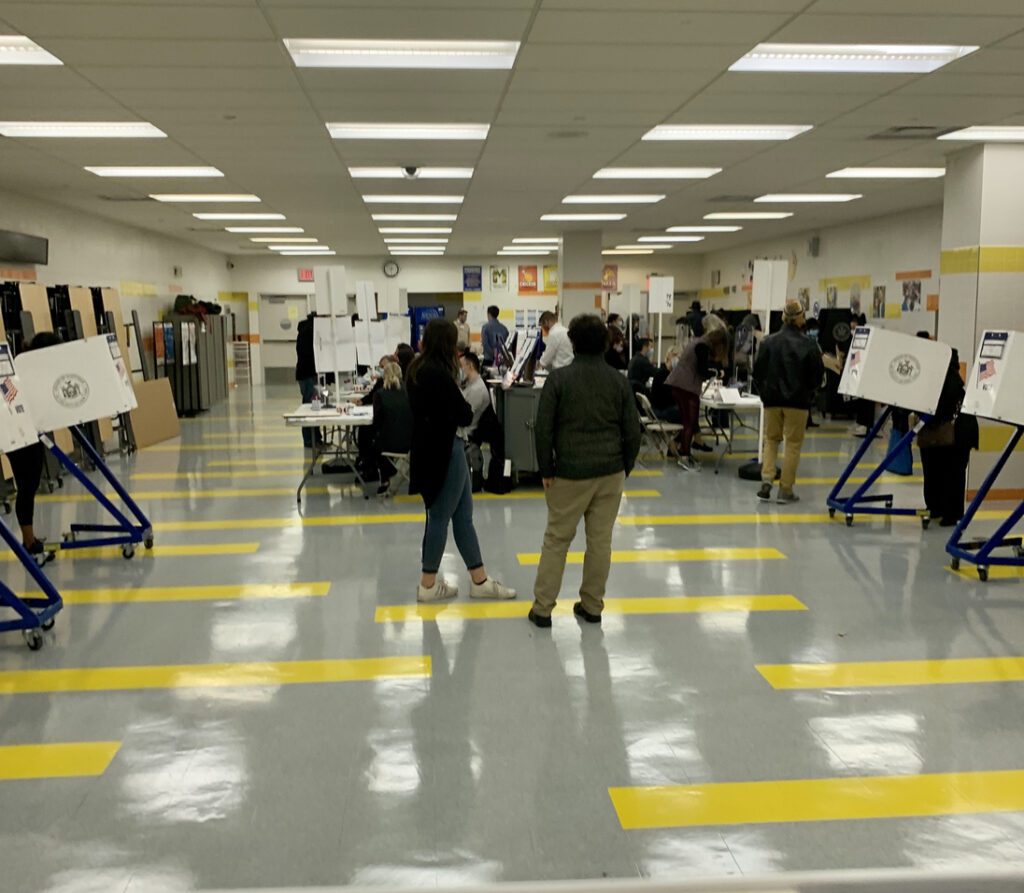4 Things to Watch in the Midterms

Here’s a fact that’ll raise just about any campaigner or consultant’s blood pressure: Election Day 2022 is less than six weeks away. So much to do in so little time. But when it’s all over, presuming we manage to accept the results, we’ll finally know the basic contours of American politics for the next two years.
We’ll also have a much better idea of what worked and what didn’t in this midterm year, at least eventually. Pundits love to talk about messaging and grand strategy, but we political professionals get to dive into the nuts and bolts as well. Here’s what I’m looking forward to finding out.
Who actually shows up to vote.
Turnout is usually the big unknown in non-presidential elections. In 2022, will the Democrats follow the typical post-presidential pattern and stay home, leaving their campaigns a smoldering ruin? Or will the end of Roe v. Wade bring women to the polls with a passion to punish Republicans. Democrats wish they could count on the kids, as always. Will abortion, clean energy and student-debt relief get them off the couch this time?
On the Republican side, the most important question must be what happens with mainstream voters who leaned conservative in the past. They’ll often be looking at Republican candidates who have performed for the base before September, but who may or may not be showing great speed in tacking centrist now. Will either approach bring the ‘burbs home?
Base enthusiasm remains a question. MAGA voters largely got what they wanted in the primaries, but with some candidates backing away and with Trump absent from the ballot, will they turn out like 2020? Or will they replay 2018, when many stayed home.
The impact of reinvigorated field organizing.
The coronavirus pandemic may or may not be over, but it’s not stopping field organizers this year. Unlike 2020, volunteers on both sides are knocking doors this time around, though they’ll often carry masks. Republicans enjoyed an advantage in 2020, with Democrats largely restricted to remote campaigning. Georgia Republicans, at least, would like to keep that edge. But with Democrats back on the streets in force, who will field favor?
How many texts is too many?
Many of those volunteers will use digital tools to connect with the campaign and each other, to reach out to specific voters in their personal networks and to blast massive numbers of texts into battleground states. Groovy! But organizing technologies haven’t always lived up to the hype, and some may be in danger of wearing out their welcome.
Relational organizing has been a “next big thing” for several cycles now, for example, and some tools have had teething troubles. I’ll be curious to see which models truly seem to help campaigns with some essential task, like fundraising or friend-to-friend voter contact.
Peer-to-peer texting, by contrast, confronts the challenge of working too well. P2P campaigns can raise money, and some have definitely turned out voters. They all give volunteers something potentially fruitful to do. But as phones in targeted states and districts will fill up with texts from strangers, will the 100th message have the same punch as the first?
Likewise, as more fundraisers buy prospecting lists with mobile numbers, I wonder how many potential donors will just stop reading. This cycle may hint at how much texting is too much texting.
Republican grassroots fundraising numbers.
Finally, let’s talk about money. Grassroots money. The serious money from small-dollar supporters that can help a campaign push through hard times and buy a whole lot of ads. All you have to do is ask! But did Republican fundraisers ask too much, too often?
Fewer people gave to their candidates and organizations through WinRed in the first half of this year than in the second half of 2021, and we can only speculate why. Perhaps donors are tuning out because they’re not enthusiastic about the candidates, but Republican primary turnout has been high. Perhaps they’ve just had enough?
A Republican consultant once said on a conference panel I watched that Democrats build lists, while Republicans buy them. While not universal on the right, the latter practice is widespread enough that the contact info of a relatively fixed pool of donors has been shopped around far and wide. Combine that approach with churn-and-burn tactics that can veer into outright deception, and donors may be voting with their spam complaints.
All sides risk poisoning the well with bad email practices, of course, but Democratic grassroots donors have spent big this year regardless. Will their Republican counterparts come around and do the same? And if they do start to open their digital wallets in the next few weeks, will the money come in fast enough to make a difference? Ad inventory, particularly good quality inventory, is not always an infinite quantity, after all.
All this and more…
The answers to some of these questions will be obvious right after Election Day, but we’ll have to wait a while for turnout data or the results of Randomized Control Tests into voter-contact tactics. I’ll be very curious to see what we can learn about media mixes as information trickles out, for example, with OTT competing with cable competing with programmatic competing with broadcast competing with yard signs these days.
Plus, we’ll surely learn about something completely unexpected as people dig into the results, which will be fun and perhaps terrifying. Next year, we get to do it all over again in Virginia. Off-off year, anyone?
Colin Delany is founder and editor of the award-winning website Epolitics.com, author of the new 2022 edition of “How to Use the Internet to Change the World – and Win Elections,” a twenty-five-year veteran of online politics and a perpetual skeptic. See something interesting? Send him a pitch at cpd@epolitics.com.
